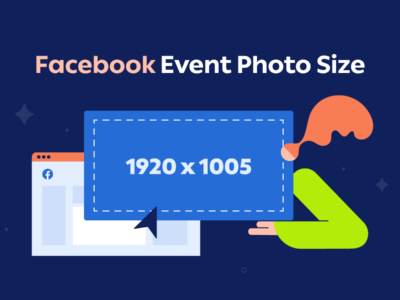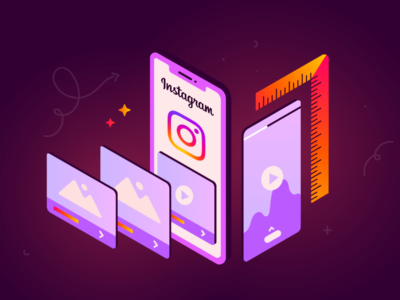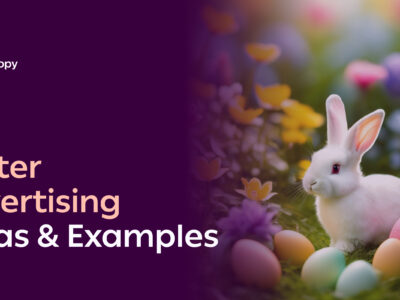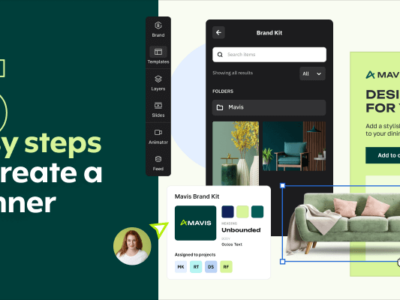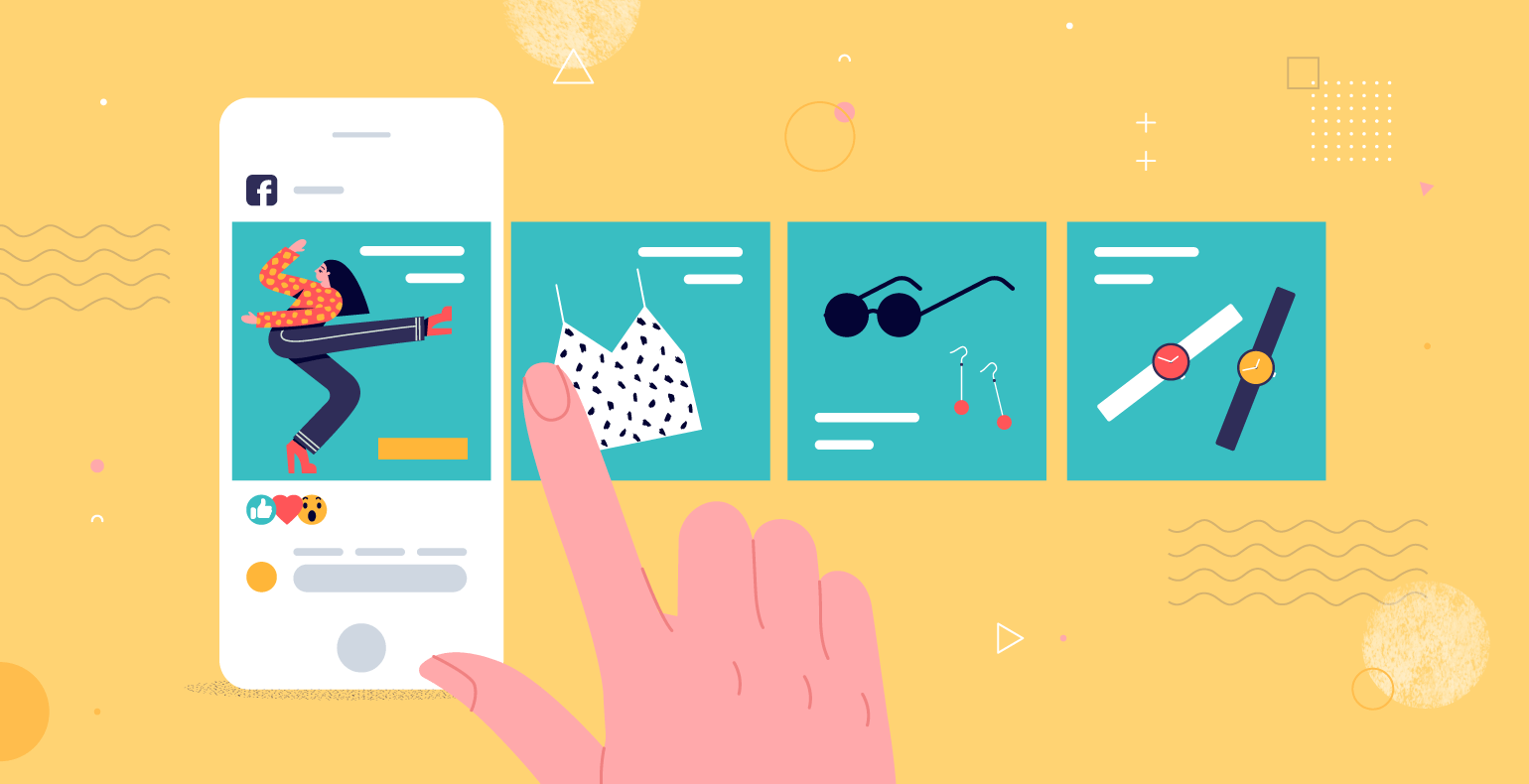A promotion strategy is key for positioning your brand on the market, making people aware of the products or services you offer, and how they could benefit by choosing you.
But with so many brands offering similar products or services as you do, your promotional techniques may be decisive for many potential clients.
In this article, we’ll dive into building a well-crafted, long-term inbound promotional marketing campaign strategy that will generate leads continuously for a long time. By tailoring your marketing efforts to your target market, you can effectively reach and engage with potential customers, ultimately driving success for your brand.
What Is a Promotion Strategy?
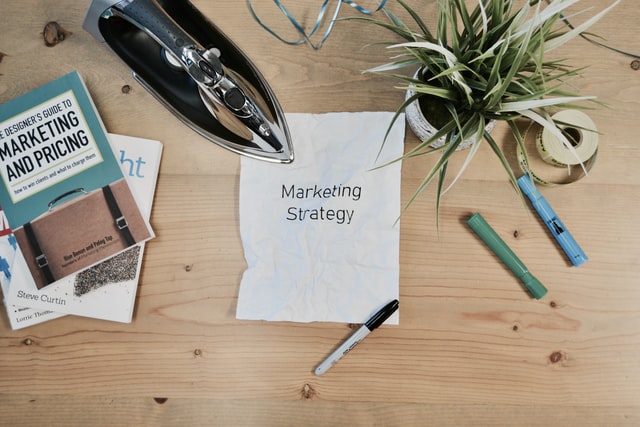
A promotion strategy is defined by the plan and tactics you implement in your marketing plan to increase your product or service demand. Promotional strategies play a vital role in the marketing mix (product, price, placement, and promotion), and they revolve around:
- Target audience. Who you are selling for, and what are their interests;
- Budget. How much you are willing to invest in promotion;
- Plan of action. What strategy you are adopting to reach your objectives and make sales.
The promotion strategy is part of the bigger picture, which is the marketing strategy.
So What Is a Marketing Strategy?
The marketing strategy definition refers to the strategic planning and long-term actions of any organization with the purpose of achieving defined goals.
These strategies can be inbound (pull marketing) or outbound (push marketing).
What Are the Best Examples of Marketing Strategies?
3. Search engine optimization (SEO)
8. Promotions
What Is The Difference Between Inbound and Outbound Marketing?
Inbound marketing is the strategic process that uses pull marketing—content marketing, blogs, events, SEO, social media—to create brand awareness and attract new customers.
This process often happens even before the potential customers decide to make a purchase. The first step is to know and connect with the brand to which they will eventually come back to take action.
Being a form of native marketing, inbound marketing relies a lot on organic leads, making your brand appear more human because the methods used in this type of marketing strategy don’t look overly promotional. They are somewhat educational and entertaining. Once your customers discover you through a good, informational piece of content, they will instantly trust you more.
Outbound or push marketing refers to any strategy where a company performs a more traditional form of marketing, such as TV commercials, radio ads, print advertisements, or sales calls (known as cold calls). You could say it’s a more aggressive form of marketing, which may bring sales on the spot, but it has a lower ROI than inbound marketing.
Being driven by sales, outbound marketing doesn’t really allow a company to build long-term relationships with customers.
What Roles Do Marketing Promotion Strategies Play?
Marketing promotion strategies play four different roles that look like a funnel that leads to purchasing:
- Build awareness
Start making your target audience aware of your brand. To build it, you must first identify the profile of the people you want to reach.
- Make people interested
Once you get your product/service out there, create interest around it, and make people intrigued and interested while differentiating your brand from the competition.
- Create product/service demand
In this step of the funnel, people will start relating emotionally to your product/service by seeing something that may benefit them.
- Make them take action
Create a way for your target audience to engage with your product/service. Place a call-to-action button on your website, emails, ads, social media profiles, or entice them with an irresistible offer. Get inspired by these sales promotion examples that work.
11 Types of Inbound Marketing Promotion Strategies
It’s time to see some of the best and most efficient inbound marketing strategies that will bring leads and turn your audience into loyal customers.
1. Drive More Traffic with Content Marketing
Content marketing is one of the key marketing strategies that can help you bring your brand in front of your audience.
It’s a form of educating your customers about the products and services you offer and related topics in your industry.
A content marketing strategy is the very definition of a win-win situation. Your audience learns how to solve specific problems while you generate leads and increase sales.
Let’s say you are a company that sells tires, and you start blogging about the importance of choosing the correct tires, when to change them, safety, and so on. This type of content will help you start building trust, making your brand a good candidate for their next tire purchase, which makes content marketing a precious indirect form of promotion strategy.
You might be surprised how important this matter is, but digital content marketing doesn’t resume at blogging. It’s everywhere. Online paid advertising or sponsored ads, websites, digital flipbooks, social platforms, and so on.
Of course, is more than just content. The process begins with creation (based on a solid digital content strategy) and is followed by promotion, measurement, and constant optimization. However, there’s a learning curve to it in which the secret ingredient is patience.
Here are a few types of digital content marketing you can explore:
- Blog posts
A prevalent yet powerful form of inbound marketing, blog posts help you promote internal and external content, include product or service information, or simply educate your audience regarding a topic from your niche.
Articles are the perfect way of increasing website ranking and boost your landing pages for free. You just have to do a bit of research before writing so you can incorporate SEO as well.
- Infographics
Infographics are a great form of visualization between images and data. They are engaging and easy to understand, as they are constructed based on short text, numbers, data, and graphics.
You can share them as a single standalone piece of content or include them in the visual anatomy of blog posts and sustain an idea even better.
- Podcasts
Some people are really good at multitasking, so they are able to workout while also stimulating the mind. The perfect way to serve them informational content in this scenario is to create a podcast for your business.
A 2020 survey shows that 37% of U.S. adults listened to a podcast in the last month. Moreover, this percent has tripled over the past decade.
It can be a sign your brand should invest in a podcast, which allows you to be extremely creative and open to choices. For example, you can invite influencers to talk about a subject from your niche or explore a more extensive topic that you can break down into more episodes.
Also, you can always repurpose your blog posts into podcasts or vice versa.
- Video
Nowadays, online video marketing drives a lot of engagement.
People often want to learn something quickly and, if possible, in a more passive way. For example, you can create a 24/7 live stream on YouTube that would include explainer videos and engaging content about your product or service. This strategy would help you get more exposure and drive more customers. In fact, 96% of people have watched an explainer video to find out more about a product or service. For these situations, it’s beneficial to have informative videos prepared for your video content marketing.
Moreover, video marketing is a powerful way to boost conversions and improve ROI. The proof is 87% of video marketers who say video has increased traffic to their website.
Again, you can repurpose your written content into videos and save more time in the creative process. You can use video editing apps like Instasize to help you produce high-quality content straight from your smartphone — no professional experience needed. In your product marketing strategy, don’t forget to include video as well.
- Paid ads
Like we said earlier, content marketing is everywhere, even in the form of paid ads. You will find them on a wide range of websites, on social media, landing pages, or banners.
Paid search advertising is still inbound marketing because your ads are a part of native marketing, and they only appear when people perform a search related to the products or services you offer. So, they’re not intrusive or aggressive.
The paid ads will help you reach a broader audience and place your product/services anywhere you wish them to be visible.
Don’t forget that content marketing is more than just creating content. Based on your overall marketing strategy, the process begins with creation, followed by promotion, measurement, and constant optimization. Without good SEO content marketing, your content may never be discovered.
One of the best promotion examples of a great marketing strategy is H&M’s sales promotion strategy. Inside H&M is their way of offering customers valuable information about their collections and fashion trends from the industry focused on local culture.
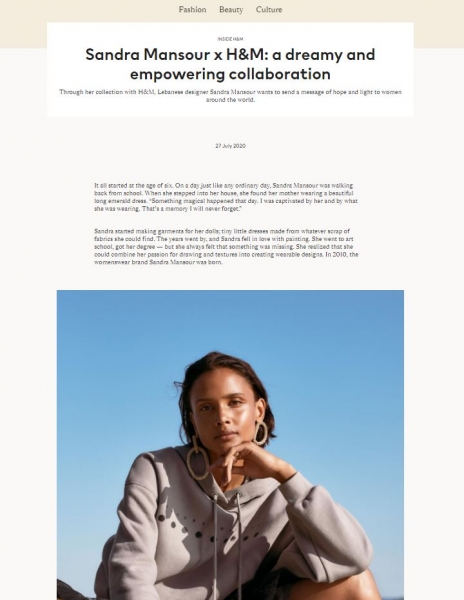
Related articles:
7 Online Marketing Strategies And Examples Every Entrepreneur Should Learn Today
13 Sales Promotion Techniques To Boost Your Sales + Case Studies
Local Business Advertising: 20 Strategies To Start Thriving Now
2. Explore the Power of Social Media Marketing
This again is content, but because it’s such an essential part of your marketing strategy, it deserves a section of its own.
With over 3.6 billion people using social media worldwide, social media marketing is a great way to share your promotional content.
Luckily, you can use a few social media platforms, depending on the audience you wish to target. Experiment with Facebook, Instagram, Pinterest, Linkedin, Snapchat, or YouTube ads, and see which one suits you best.
Before starting, see where you should invest your social media marketing budget and what type of ads these platforms can host. Snapchat, for example, is associated with youngsters, while LinkedIn is a platform for professionals.
Also, don’t forget that YouTube is the second most popular search engine after Google, so it’s definitely worth taking a look at it.
Find the right social media platform for your brand and take advantage of everything it has to offer.
Communicate with your audience online. Social media marketing is a great mediator between your potential customers and your brand.
Keep in mind that your approaches should be different on most social media channels. You have to use targeted posts and display ad designs to maximize online conversions with a buyer persona.
Take a look at Audi’s social media marketing strategy on social media. At first glance, you might call their Instagram page boring. But if you look closer, you’ll see that boring is not the right word. I’d instead call them persistent.
Their attitude towards social media is “if it’s not broken, don’t fix it.” They simply stick to what they know works for their audience. Their Instagram social media marketing strategy is pretty simple and catchy.
Luxurious images with expensive cars in impressive and flattering lighting—guaranteed success for an Instagram account with 15.7 million followers.
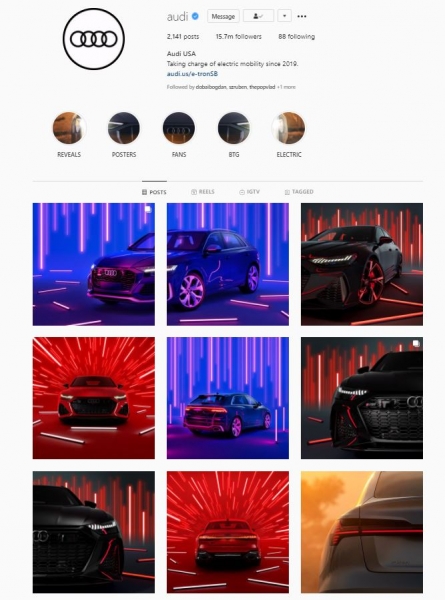
3. Elevate Your Visibility With The Power of Search Engine Optimization
Search Engine Optimization (SEO) is a crucial part of an inbound marketing strategy. It involves optimizing a website’s content, structure, and overall online presence to improve its visibility and ranking in search engine results pages (SERPs) for relevant keywords and phrases. The ultimate goal of SEO is to attract organic (non-paid) traffic from search engines and drive targeted visitors to a website.
Here’s how SEO works as an inbound marketing strategy:
- Increased Visibility: Optimizing website content, meta tags, headings, and images according to best SEO practices can increase businesses’ visibility in search engine results. This improves the likelihood of attracting clicks from users seeking information or solutions related to their products or services.
- Targeted Traffic: SEO helps attract targeted traffic to a website by optimizing for specific keywords and phrases that align with the business’s offerings and the needs of its target audience. As a result, the traffic generated through SEO tends to be highly relevant and more likely to convert into leads or customers.
- Builds Credibility and Trust: Websites that rank higher in search results are often perceived as more credible and trustworthy by users. By consistently appearing at the top of SERPs for relevant queries, businesses can build authority and establish themselves as industry leaders, which enhances brand reputation and credibility over time.
- Cost-Effective: Compared to paid advertising methods such as pay-per-click (PPC) campaigns, SEO is a cost-effective inbound marketing strategy in the long run. While it requires an initial investment in terms of time, resources, and expertise to optimize a website and produce high-quality content, the traffic generated through organic search is accessible and sustainable over time.
- Long-Term Results: Unlike some outbound marketing tactics that provide short-term results, SEO is a long-term strategy that can continue to drive traffic and results over time. Businesses can maintain and improve their search engine rankings by consistently publishing high-quality content, optimizing website elements, and earning backlinks from reputable sources.
- User-Centric Approach: SEO is not just about pleasing search engines but also about providing users value. By creating informative, relevant, and user-friendly content that addresses the needs and interests of their target audience, businesses can improve the overall user experience and encourage engagement, leading to higher search rankings.
Overall, SEO is a fundamental inbound marketing strategy that helps businesses achieve their marketing goals, empower their marketing team, and gain a competitive advantage by leveraging the power of search engines to connect with potential customers when they are actively seeking information or solutions.
4. Use Email Marketing to Drive Engagement and Sales
Email marketing can be part of an inbound promotion strategy, as well as an outbound promotion strategy.
It’s up to you how you want to use it.
But when used correctly, an email marketing campaign proves to be extremely effective in a brand’s marketing strategy.
Here are some email marketing stats to convince you:
- There are 3.9 billion daily email users, a number predicted to climb to 4.3 billion by 2023. (Statista)
- Marketers who implemented segmented (personalized) email campaigns have witnessed a 760% increase in revenue. (Campaign Monitor)
- On average, marketers send 3-5 emails per week. (Not Another State of Marketing)
- Over the last 12 months, 78% of marketers observed an increase in email engagement. (Not Another State of Marketing)
- 31% of B2B marketers recognized email newsletters as the best way to generate leads. (Content Marketing Institute)
- 81% of B2B marketers say their most used form of content marketing is email newsletters. (Content Marketing Institute)
- 87% of B2B marketers say email campaigns are one of their top choices for organic distribution channels. (Content Marketing Institute)
- 90% of content marketers measure content performance according to email engagement. (Content Marketing Institute)
- 46% of all emails are opened on mobile devices. (Litmus.com)
Inbound email marketing campaign focuses on building a relationship with the readers instead of spamming them with overly promotional emails.
An inbound email marketing strategy should keep count of a few things, such as the message’s value and timing.
Once you create your lists of email addresses, it means you have the right people who are actually interested in your product or service. Next, the only thing you have to do for your email campaign is to provide your subscribers with quality content, preferably targeted through segmentation. Don’t forget to personalize your messages to build trust and familiarity with your audience—using an email signature guide is one way to reinforce brand consistency and professional image in every communication.
Send newsletters, feature launches, event invitations, or news from the industry. You can also use your email campaigns to remind people of your social media presence so that they could follow you.
Here’s an example from Course Hero.
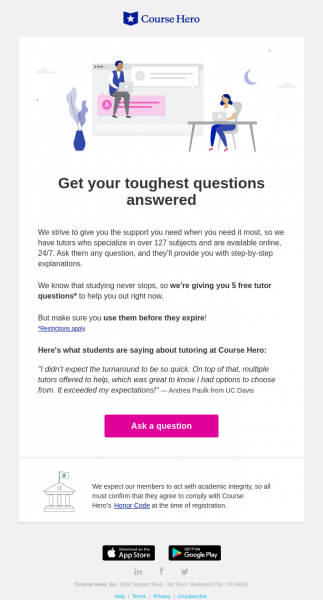
5. Run Referral Marketing to Incentivize Existing Customers
When it comes to referrals, the numbers speak for themselves. 92% of people will rather trust a product or service recommendation from a friend than any other form of marketing.
Word of mouth advertising, also known as WOM, is one of the most valuable examples of pull promotional strategies. While experts consider it one of the strongest methods out there, it is also the most difficult to obtain.
There are two types of WOM advertising, also called word of mouth marketing (WOMM):
- Organic, which refers to recommendations from one person to another without your interference, but simply because they are satisfied with the product/service;
- Through referral programs and advertising campaigns designed to encourage or accelerate WOM in existing or new communities.
These two work hand in hand. Once you have a great marketing campaign, you will also bring leads organically.
77% of consumers trust reviews more than advertising, and because today, 4.66 billion people have access to the internet and are digitally connected, imagine what a single recommendation or positive review will do. News travels super fast on the internet.
Yes, it requires a lot of time and effort, especially if your brand is new on the market. However, there are a few techniques that encourage this type of brand promotion strategy.
Consider creating a referral program in which customers who share their brand experience are rewarded in a certain way. Maybe a discount on their next purchase, a gift card, or anything that will make them feel appreciated. After all, inbound marketing strategy promotion plans have the customer experience as their top priority.
WOMM is an ongoing process, but it will get easier as your brand grows.
You can also create groups and start a community around your brand.
Eventually, happy customers will start to advertise the brand without adding any extra effort to the process. Having impartial people praise your business and become your brand ambassadors on social networks is the most natural form of advertising.
Keep in mind that before even starting to determine people to create buzz around your brand, you have to make sure you can offer everyone a great customer experience from the moment they enter your website to the checkout point.
If you are still questioning yourself about this marketing tactic, I’ll give you clear referral marketing examples in practice.
Let’s say you are going on a trip to Barcelona. Before your arrival there, what would be one of the first things you usually do? Bingo! Check for recommendations. You look for blogs, Instagram pictures or profiles, Tripadvisor reviews, and so on. In one way or another, all of those are part of a referral marketing promotion strategy.
Adidas’ sales promotion strategy not only includes referrals but also uses dark social media (sharing content through a third party) to get those much-needed recommendations.
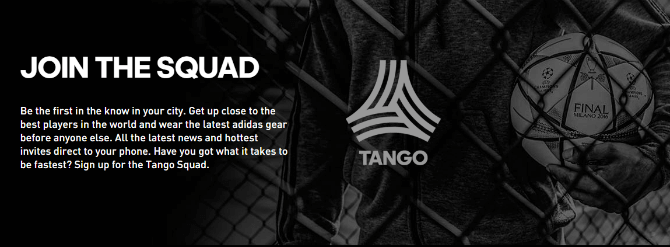
“70% of global brand referrals are from dark social, not Twitter or Facebook.”, says Adidas senior director of global brand communications Florian Alt. Thus, back in 2016, Adidas started their Tango Squads campaign.
They started operating groups on messaging apps, such as WhatsApp and Facebook Messenger, to share exclusive content, pre-launch announcements, etc. This move’s principle is simple: link brand supporters, feed them valuable information and have them spread it with the world.
These are the guys who will push out your stories and content. They give it longevity and authenticity because they are talking in a private messaging environment. If it comes as a referral from your mate, you’re much more likely to pick it up than if it comes from a brand, says Alt.
6. Sponsor Events to Provide Customer Experiences
Sponsorships and inbound marketing go together like peanut butter and jelly.
But there is a fine line between event sponsorship being outbound or inbound.
The main difference is that outbound sponsorships usually chase down attendees to make them buy. In contrast, inbound sponsorship focuses on providing attendees with quality information, valuable content, and customer experience, aiming to build a long-lasting relationship.
Of course, the main goal is the same–turning potential customers into loyal customers. What’s different is the approach.
Think about how you would provide value to attendees through an event and then advertise it. For example, have someone represent your brand to perform an inspiring speech and share it on social media, create a flyer, or make a professional banner with helpful information for future participants.
Also, create an opportunity for your participants to test your products during the event. In this way, you’re offering a customer experience and a chance to see your product’s benefits.
Inbound sponsorship is about building the foundation of a loyal brand-customer relationship. It might not follow through right then and there, but if what you offer is valuable enough for the participant, it will eventually turn them into loyal customers.
Other benefits of sponsored events:
- Build a reputation
- Increase brand visibility
- New business partnerships
- Building a community
This strategy works great also in local business advertising.
I am pretty sure you all know already about one of the most famous partnership campaigns of all time. So far, PepsiCo has been using this sponsorship marketing promotional strategy to support the NFL, and it’s getting on like smoke.
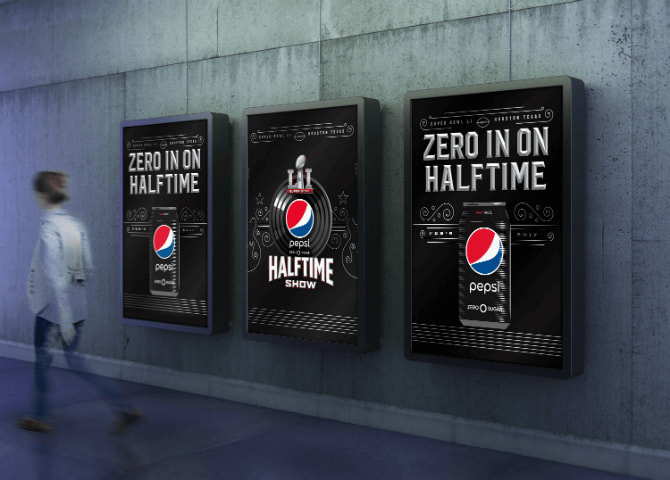
7. Work with Influencers to Increase Brand Awareness
Working with influencers is like making the best of traditional word of mouth marketing but in the digital landscape. And this is even better because you can also measure its performance through likes, shares, social media engagement, referrals, clicks, and conversions.
89% of marketers claim the ROI is as good as or even better than other marketing strategies, and 71% say influencer marketing brings them quality leads and better traffic.
Think about this: an influencer has already built a community of loyal followers that trust him/her.
Once you decide to work with influencers, you can reach thousands of potential customers.
Here are some tips for starting your partnership with an influencer:
1. Choose them carefully
They have to be relevant for your industry and somewhat specialized in a specific topic and category that fits your niche. Try to narrow down the criteria before choosing them to make sure you’ll find the best matches for your campaigns.
2. Work with more than one influencer
A famous influencer in your industry may not be that popular among many followers, especially if they’re at the micro-influencer stage. Choose more than one to advertise for your brand and reach more people at once. For instance, if you were trying to start a Boba shop in your area, you may be better off finding two or three smaller foodie influencers in your local area to showcase your shop as opposed to finding one larger influencer who primarily focuses on beauty and fashion.
3. Set campaign goals
Define your campaign goals to know what to ask and expect from the influencer you’re working with. Do you want to drive conversions, boost your brand’s reach, increase the number of followers on social media, or be more prevalent in new markets? Do a bit of research before choosing an influencer to see if that’s the right way to help you reach your target.
4. Allow them to be creative and add their own touch
Once you’re decided on your advertising partner, let them do their magic. The influencer knows best how to engage with their followers and the best way to promote a brand without looking fake or pushy.
3 easy ideas to use when working with an influencer:
1. Give them discount codes
One way to make your product/service more visible and increase sales is to collaborate with influencers, so they announce discount codes for specific products you’re offering.
2. Run contests and giveaways
This one works like a charm. You choose the influencer that announces the contest’s rules on their social media account. They may include steps like:
- Tag a friend
- Like the post
- Follow the brand’s page
- Share the post
- Create content related to the brand
- Leave a comment
3. Send products for review
You can develop a partnership with an influencer and send them products to review. It’s a win-win situation. They get free products, and you get advertising.
Influencer marketing is cost-effective, especially if you choose to work with micro-influencers, which is also an extremely efficient and trustworthy option.
This partnership benefits the brand in more than one way:
- You will quickly build a trustworthy brand;
- Your products/services will reach your target audience fast;
- Increases brand awareness and turns customers into brand ambassadors.
When it comes to choosing the social media platforms for promoting your brand through influencer marketing campaigns, focus on those where your target audience spends their time.
According to Mediakix, 89% of marketers say Instagram is vital to their influencer marketing strategy, followed by Instagram Stories, with 73% and YouTube with 56%.
Long story short, an influencer marketing promotion strategy can help you speed up your brand awareness. Thus, giving your brand more credibility and power of retention.
One example of a successful influencer marketing campaign is the one from Under Armour. Their campaign focused on 35 athletes taking pictures of them while working out in Under Armour clothes and using the hashtag #FindYourOnePercent.
Here’s one of the athletes in action:
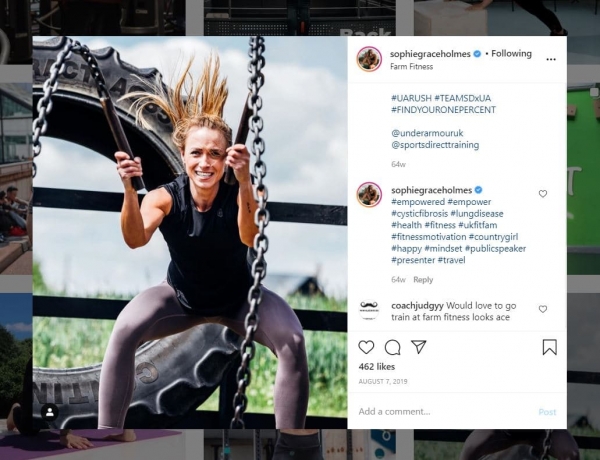
8. Use Free Samples, Sales Coupons, and Promotions to Boost Sales
Alright, let’s face it. Discounts are everywhere, and people love that. Whether they take the form of a free sample, a coupon, or a promotion, sales can actually be a great example of an inbound marketing strategy for products.
However, inbound sales aim for something more than just a simple purchase. When it comes to inbound/pull marketing, it shouldn’t be just a one time fling but a long-lasting, serious relationship.
So, which promotional strategies count as inbound marketing?
Think about the times in which you decide to buy a monthly subscription for a particular brand, and after you check out their price lists, you realize that the yearly subscription is way cheaper.
Now that is inbound marketing. Aiming for long runs instead of short ones.
Another common practice is giving free samples. If you want, we can call this “the drug temptation.” Why? Because it works exactly like that.
The brand is confident that the person who tries the product for free will be willing to pay the full amount to repeat the experience. On the other hand, the customers are more than willing to try something for free without any strings attached. So, it’s again a win-win situation.
The same principle applies to free trials and demos. I’m sure you’re all familiar with the famous “first month for free” line. As harmless as it sounds, it is part of the same marketing plan.
HBO GO knows this sales promotion technique very well and is embracing it with its arms open.
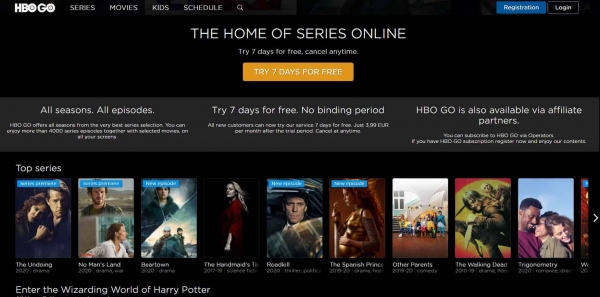
Another fairly typical example of successful sales promotions is coupons, again for the same reasons. What do coupons do? They imply a specific customer behavior: repetitiveness.
Repetitive purchases create a particular type of familiarity with the product that can quickly turn into loyalty.
9. Offer Refunds & Rebates to Keep Customers Happy
Refunds and rebates are some of the classics in product promotion strategies. The concept behind them is pretty similar. However, they are different in essence and practice.
Refunds represent a way of guaranteeing your customers about the quality of your product. Does the “money-back guarantee” sound familiar to you? This promotion marketing tactic works like reverse psychology. Knowing that you can get your money back if you are not satisfied with the product will make you want to try it.
Of course, businesses that adopt this type of brand promotion strategy mostly know customers won’t ask for their money back because they will fall in love with the brand.
So, before you embrace this kind of strategy, make sure you offer a good quality product.
On the other hand, rebates are counting on a different thing–the comeback of the customer.
How does it work?
In this particular marketing strategy, the partial discount, aka rebate, is offered only when the purchased quantity reaches a specific limit.
The targeted public here is not potential customers, but rather existing customers, in the hopes of securing customer loyalty.
Think about an expensive bottle of champagne. Let’s say it costs around $200. Adopting a rebate promotion marketing tactic won’t make people who never tried it before buying two bottles of it. Chances are, customers who are already familiar with your brand will be interested in purchasing a second bottle for that price.
And that’s how rebates work.
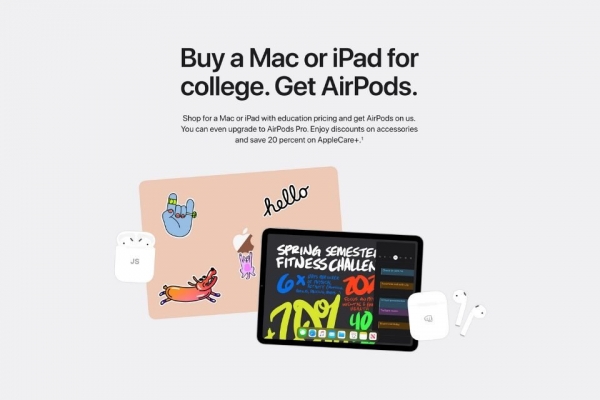
A great example of a rebate is Apple’s sales promotion strategy. Until today, Apple has been taking advantage of rebates to establish long-term customer relationships with certain target groups. Every year, Apple addresses students with approaches such as the one above during back to school promotions.
10. Create Customer Loyalty Programs and Patronage Rewards to Increase Customer Satisfaction
An oldie but goldie.
Brands have been rewarding their loyal customers before this concept even existed. Whether it takes points and client scores or just simple bonuses at their customer anniversaries, loyalty programs and patronage rewards follow the path of pull marketing strategies.
Moreover, it makes customers feel appreciated and important, creating a special personal bond with the brand itself.
This marketing promotion strategy is usually encountered in brands that have a touch of corporate to it.
From bank points for credit card purchases to free internet from telecommunication companies, customer rewards are very famous in pull marketing.
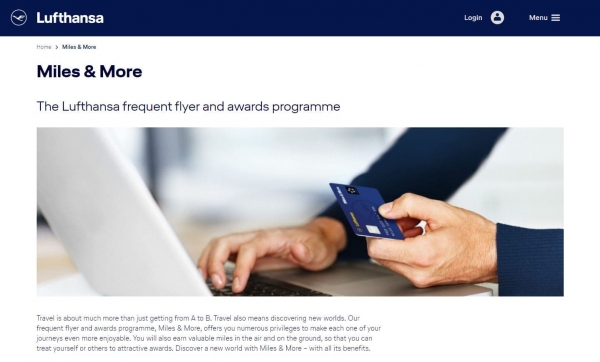
Take a look at Lufthansa and its Miles & More program. It’s the most extensive loyalty program in Europe and has over 20 million members worldwide.
The bottom line of this rewards program is the more you fly with them, the better the benefits: better comfort, better prices, faster layovers, and many other privileges.
11. Capture Attention with Guerrilla Marketing Tactics
Guerrilla marketing is a unique advertising strategy that utilizes surprise and unconventional methods to grab the attention of potential customers and promote a product or service. It borrows the “guerrilla warfare” concept, relying on creativity, innovation, and low-cost tactics to achieve maximum impact.
Here are some key aspects of guerrilla marketing:
- Unconventional tactics: Instead of traditional advertising channels like TV commercials or billboards, guerrilla marketing uses unexpected and creative approaches to reach the target audience. This could involve anything from interactive installations in public spaces to flash mobs or customized experiences.
- Surprise element: The element of surprise is crucial in grabbing attention and making a lasting impression.
- Low-cost focus: Guerrilla marketing relies on resourcefulness and creativity rather than large budgets. This makes it an attractive option for startups and small businesses.
- Engagement and interaction: Unlike passive traditional advertising, guerrilla marketing seeks to engage the audience and create a memorable experience actively.
- Word-of-mouth and social media: The goal is to generate buzz and word-of-mouth marketing, often amplified by social media sharing.
Examples of guerrilla marketing tactics include:
- Using sidewalk chalk art to promote a product or event.
- Organizing flash mobs or surprise performances in public spaces.
- Creating interactive installations or experiences that encourage participation.
- Using ambient advertising techniques, such as projecting images or messages onto buildings or sidewalks.
- Employing guerrilla projections, where images or messages are projected onto buildings or landmarks without permission.
- Distributing attention-grabbing promotional materials or branded merchandise in unexpected places or ways.
Guerrilla marketing can be a powerful tool for businesses to stand out from the crowd and memorably connect with their target audience. However, it’s important to remember that it requires careful planning, creativity, and a good understanding of the target audience to be successful.
Finding The Right Marketing Promotion Strategy
The truth is, a promotion strategy isn’t a one size fits all type of plan.
Think about a simple white T-shirt. How would you sell it to a teenager in comparison to a woman in her mid-50s? The same product, same fabric, same material. Two different audiences, two different approaches. When selling to a teenager, it will probably be about being trendy and cool, while in the second case, it may have something to do with staying classy and looking put together.
You can’t just blindly follow some steps and expect success because multiple factors influence this.
It almost always has to do with positioning (I mentioned this in the promotion definition), quality of the product, the market’s power of purchase, economy, trends, needs, localization, access to the product or service, and product category. And let’s not forget about the most important influencer: the audience.
Here are a few tips before starting a promotion strategy:
- Set your promotional goals so you have a realistic sense of where you’re headed.
- Set your budget to help you prioritize your actions.
- Define your target audience to know the approach you will use in your campaigns.
- Choose the promotion types that are the most effective and appropriate for your goals and budget.
- Start working on the key message of your campaign.
- Regularly measure your campaign’s results to see if it needs to be tweaked.
Actionable Tools & Resources for Effective Promotion
To successfully implement any marketing promotion strategy, businesses need the right tools. These tools can help with ad creation, SEO, social media management, email marketing, and automation—making campaigns more efficient and impactful.
1. Advertising & Advertising Automation Tools
One of the most critical aspects of promotion is crafting high-quality, engaging ads that capture attention.
- Creatopy – A powerful advertising automation platform designed to help businesses and marketers streamline their ad creation and campaign scaling. With Creatopy, you can:
- Design professional, high-quality ads in multiple formats (static, animated, or video).
- Automate the creation of multiple ad variations to fit different platforms and audiences.
- Ensure brand consistency with templates and team collaboration tools.
- Optimize ad campaigns for social media, Google Ads, and display networks.
- Save time with bulk editing and automation, making ad production faster and more efficient.
- Design professional, high-quality ads in multiple formats (static, animated, or video).
Using Creatopy, businesses can scale their advertising efforts while reducing manual design work, ensuring a faster and more effective campaign execution.
2. SEO & Content Marketing Tools
To drive organic traffic and ensure visibility, businesses should leverage SEO and content marketing platforms such as:
- Google Analytics – Provides website traffic insights and user behavior analysis.
- Ahrefs / SEMrush – Helps find high-ranking keywords, track backlinks, and analyze competitors’ strategies.
- Grammarly / Hemingway Editor – Ensures content is readable and grammatically optimized for search engines.
3. Social Media Management Platforms
Social media plays a crucial role in promotional strategies. To schedule, analyze, and automate posts, consider:
- Hootsuite / Buffer – Schedule posts in advance across multiple platforms.
- Sprout Social – Monitor engagement, track hashtags, and manage customer interactions.
4. Email Marketing & Automation Tools
Email remains one of the highest ROI marketing channels. The following tools help businesses automate campaigns and personalize communication:
- Mailchimp / HubSpot – Design and send professional marketing emails.
- ActiveCampaign – Automate email sequences based on customer behavior.
- ConvertKit – Ideal for content creators and small businesses focusing on lead generation.
5. AI & Marketing Automation Tools
AI-driven platforms are reshaping digital marketing by providing data-driven insights, content automation, and enhanced personalization:
- ChatGPT / Jasper.ai – AI-powered content creation and copywriting.
- Zapier – Automates workflows between different marketing apps.
- Google Ads Smart Bidding – Uses machine learning to optimize PPC campaigns.
Conclusion
When choosing your marketing promotion campaign, think about your product or service’s most valuable feature and start creating a plan from there, focusing on bringing that feature in front of your target audience.
Your brand’s individuality will contour your campaign needs: what strategies to adopt, what social influencers to contact for a partnership, or which type of social media marketing you should try.
I hope this article was insightful and will help you choose the best promotional techniques and get you started with an inbound marketing strategy for your brand.



